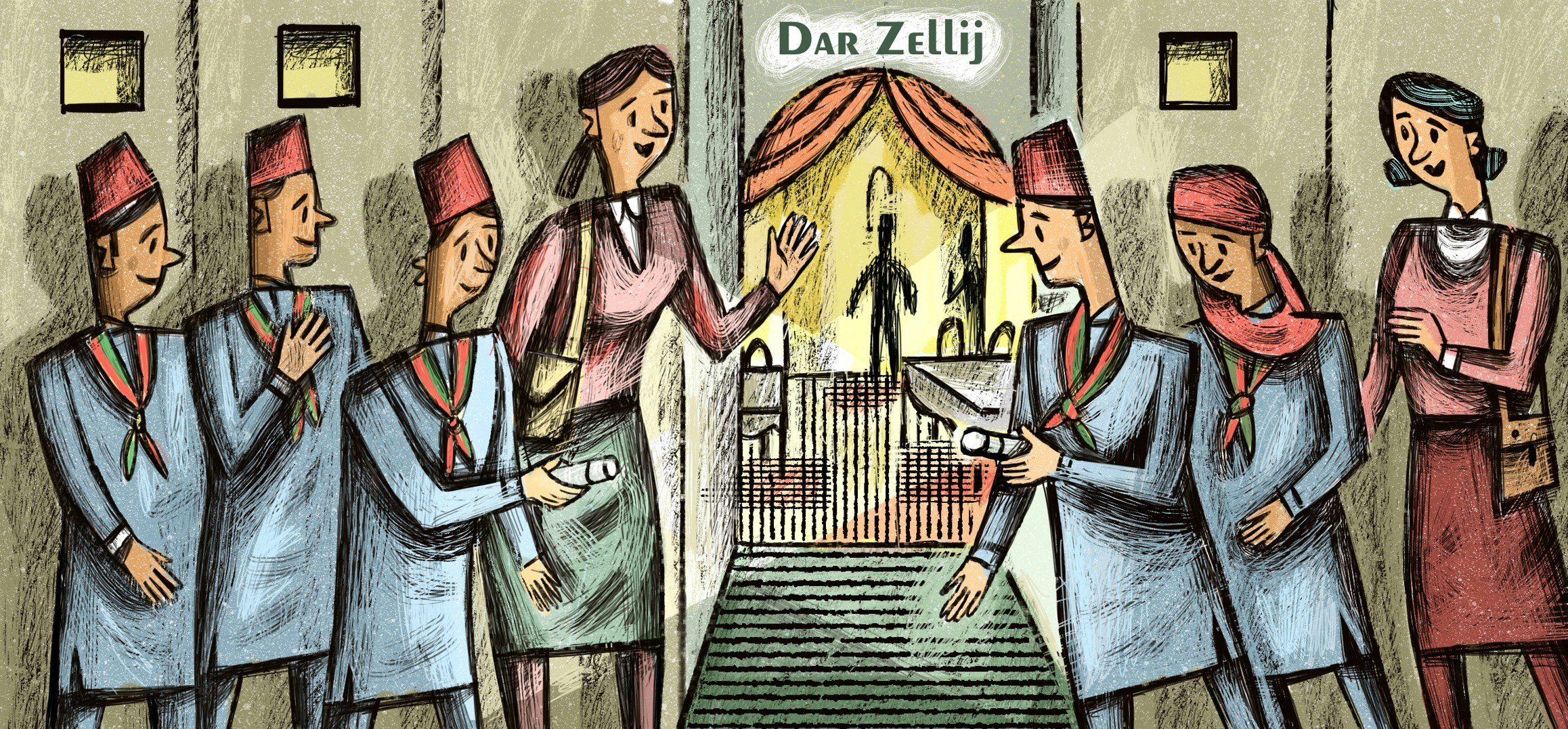Scruffy splendour
Holy Week showcases a very Venetian combination of Renaissance splendour and DIY
This article is taken from the May 2024 issue of The Critic. To get the full magazine why not subscribe? Right now we’re offering five issues for just £10.
Red city express
Mother’s Day in Marrakech: feeling tremendously cosmopolitan, Mamma and I made a dinner date at Dar Zellij. She had hopped in from Fez, I from Venice, but with the help of scouts in fezzes and pale djellabas who guided us by torchlight from opposite ends of the medina, we arrived bang on time beneath the stunning marquetry dome of the riad.

Pigeon pastilla and orange flower ice cream were a marvellous beginning to a few days’ adventure which included a research trip for me to the archive at the charming Maison de la Photographie to see nineteenth-century images of the city’s once-flourishing Jewish community.
Mamma adored the Jardins de Majorelle, where she picked up a copy of Dear Yves, by Yves Saint Laurent’s lifelong partner Pierre Bergé. Lyrical and sometimes lacerating, it felt particularly special to read Bergé’s account of passionate grief in the city which defined their relationship.
* * *
The Red City remains headily chaotic, but organised mass tourism has very much arrived. The Djemma el-Fnaa, the square whose drummers and snake charmers epitomised the spirit of Marrakech for decades, now feels like a bustling theme park, and the souks have expanded to envelop the whole centre. I grudgingly consented to a “camel safari”, which involved a trudge through a plastic-strewn wasteland in a nylon faux-Tuareg robe complete with capacious pocket to accommodate i-phones. Monsieur Saint Laurent would not have approved.
• • •

I have lived in Italy on and off for a decade, but until last week I’d never been to a Centro Sociale, the squats-cum-community centres which radicalised a generation of Italian youth in the 1970s and are still going strong. In Venice, the Laboratorio Occupato Morion in deepest Castello is housed in a hammer-beamed former boatyard with ancient Byzantine windows, but the Turkish loos came as a bit of a shock — they apparently demonstrate affinity with the oppressed proletariat. Still, the pizza was pretty good and the band, a bunch of jolly Venetian dads in Canadian tuxedos who call themselves the Be-Wops, had the dance floor packed.
Cafavy’s happening
The Onassis Foundation’s Archive of Desire performance, hosted by Bruno Racine, former director of the Centre Pompidou in Paris and now head of the Pinault Foundation at Palazzo Grassi, felt much more like a radical “happening” than the Be-Wops. Curated by Afroditi Panagiotakou of the Cavafy Archive, the piece was a tribute to the Greek-Alexandrian poet to commemorate the 160th anniversary of his birth.
Poetry by Robin Coste-Lewis accompanied a haunting contemporary soundtrack for piano and cello performed by Vijay Iyer and Jeffrey Ziegler in front of a hallucinatory visual installation which was revealed at the end to be a microscopic investigation of a single painting by Julie Mehretu, the headline artist for the Grassi’s summer exhibition.
In addition to conserving Cavafy’s archive, the Onassis foundation is restoring the poet’s home in Alexandria as a museum, and the dreamy, mournful music pulled me back to the Maghreb.

That it’s not possible to visit Cavafy’s home city at present made the question of one of his most famous poems feel very current: “What’s going to happen to us without the barbarians? Those people were a kind of solution.” The poem’s answer, of course, is that we are the barbarians now.
More music on Easter Saturday, when Venice’s favourite countertenor, Alex Simpson, returned to Venice for an electrifying performance of Pergolesi’s Stabat Mater, accompanied by the period orchestra of Venice Music Project at the Scuola dei Carmine. I’ve written about VMP before, but their concerts are getting stronger by the year and should be on every visitor’s itinerary, not least because unlike the Fenice, they don’t over-programme and finish at the civilised hour of 8 pm.
Scruffy splendour
Primi veneziani, poi Cristiani (Venetian first, Christian second), is a proverb which encapsulates Venice’s history of sometimes tumultuously independent relations with the Catholic Church.
Centuries of struggles for precedence between patriarchs and Popes have left their mark on the white stone guidelines outside the now-neglected church of San Pietro di Castello, which showed all parties where to stand so that no one should lose face. Venice was excommunicated on several occasions, yet the city still feels more actively religious than anywhere else in Italy excepting Rome.
The thanksgiving festivals of Redentore in July and the Madonna della Salute in November involve specially-built bridges and huge crowds, but Holy Week is where La Serenissima gets out the big guns, admittedly with a very Venetian combination of Renaissance splendour and DIY.

Sacred vignettes: a group of workers haul a huge plywood cross from a barge outside the Church of Saint Mary of the Rosary, fags on the go, accompanied by blasphemies that would give Our Lady the vapours. The model Easter tableaux in the lobby of my gym, complete with running water in Pontius Pilate’s miniature washbasin and a jaunty striped canvas awning shading the guests at the Last Supper.
Sacristans at the Salute Basilica attempt to light the candles on the altarpiece by drenching a cord in Zippo fluid and clambering up the Le Court marble statues whilst the hapless priest tries to intone the Kyrie eleison.
Gold, gold and more gold, the mosaics of San Marco dancing to biannual life as the Patriarch raises the Host in vestments handstitched by generations of dowryless Venetian ladies as a fight breaks out between the queueing tourists who just for once are left outside in the rain. The whole history of the city manifests at Easter, baroque, proud, splendid, scruffy, camp, invincible.
Enjoying The Critic online? It's even better in print
Try five issues of Britain’s most civilised magazine for £10
Subscribe














